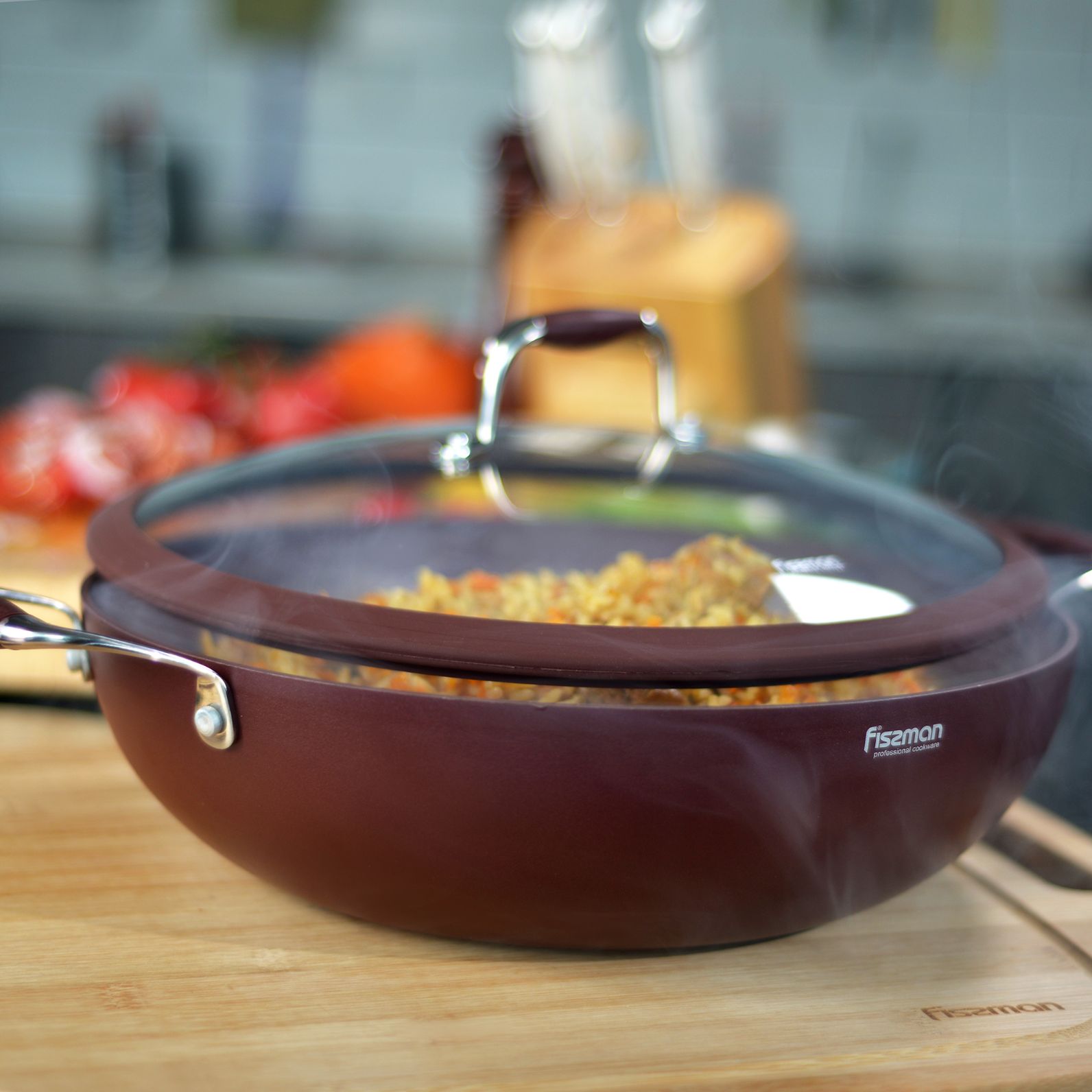
Why Does Oil Sputter When We Cook
A good frying pan makes the food taste better. It's no coincidence that pros unanimously agree that good cookware is the key to success. No less important than fresh food and a tried and tested recipe.
But it is not enough to buy a quality roaster. Even with expensive brand-name cookware, problems such as flying hot oil splashes are common. It has nothing to do with the cookware's quality or the hostess's culinary expertise. There are 4 reasons why a frying pan shoots. And 4 ways to avoid it. Read about them in the article.
Table Of Contents:
- Oil Shoots In The Frying Pan - What Does It Mean?
- Why Oil Splatters When Frying.
2.1 Improper Heating.
2.2 Poor Oil Quality.
2.3. Wet Body.
2.4. Wet Food.
- Why Water In Oil Causes "Shooting."
- How To Fry Without The Pan Sputtering.
4.1 Paper Towel.
4.2 A Mesh Screen.
4.3 Salt.
4.4. Parchment.
- Does The Lid Help?
- General Tips On How To Fry Without Splattering.
- How To Fry Different Foods Without Splattering Oil In The Pan.
7.1 Meat.
7.2 Vegetables.
7.3 Fish.
7.4. Poultry
- How Much Frying Oil Is Needed?
- How To Know When The Oil Is Hot.
- What Kind Of Frying Pan Is Needed?
- Fissman Products.
- Top 10 Frying Pans.
- Customer Reviews.
Oil Shoots From A Frying Pan - What Does It Mean?
Imagine the most common home-cooked meal. Pan-fried chicken and mashed potatoes are on the menu. The potatoes are already cooked. Time to fry the chicken filet. You put a frying pan on the fire, heat it for about a minute, pour in the oil, and let it heat up. You coat the chicken in breadcrumbs and are about to lay it on the bottom of the pan carefully, but you don't have time. Suddenly, out of the blue, the pan starts making loud bubbling noises that sound like gunshots. The oil in the frying pan hisses, even though there's nothing in it yet. Hot splashes fly in all directions, and it's dangerous to approach the cooker. Why does oil shoot in a pan? We will answer further. But for now, turn off the pan so as not to avoid getting burnt.
Why Does Oil Spurt When Frying?
A frying pan that sputters is a good reason to think about what's wrong with it or what you're doing wrong. The cookware should not make any annoying noises or be dangerous. The most common causes are
- Incorrect heating. This occurs when you put the container over high heat. The metal casing supplemented with a ferromagnetic bottom heats up almost instantaneously. Oil poured on the hot surface also heats up. If there were even microscopic drops of water on the bottom, expect it to splash.
- Poor oil quality. With today's range, it's not difficult to choose a good oil. But the wide selection leads to products not of the highest quality on the market. Some oils contain more moi,sture. Water on a hot surface leads to "shooting."
3. Wet housing. It is incorrect to keep the pan wet or to rinse it under water before cooking. Only a completely dry surface ensures that there are no small water vapor bubbles in the heated oil.
4. Watery foods. Excessive moisture in the ingredients of the food to be cooked can also lead to "shooting." For example, defrosted meat should be held in a colander to let all the water drain out. The vegetable juices can also be squeezed out by hand.

Why Does The Water In The Oil Cause "Firing"?
Water is a catalyst for the formation of hot spatters. It's all due to its low boiling point. It changes into a vapor state at only 100 degrees Celsius. The gas expands violently. It happens quickly and resembles a small explosion.
On a normal household cooker, the oil heats up to 100 degrees or more in a minute and a half. The water vapor, which was liquid a moment ago, begins to rise to the surface of the oil and bursts upwards with a loud pop. This oscillation causes small droplets of hot oil to fly around. The more water in the pan and the higher the oil temperature, the more intense the splashing.
How To Fry Without Splattering
If the oil is already boiling, turn the heat down and let the pan cool down.
It is recommended to turn off the cooker and wait a few minutes. When the frying pan's surface returns to normal temperature, you can resume cooking.
But what can one use to prevent the pan from splattering in the future? Here are a few simple but effective ideas
1. Use a paper towel. Use it to dry the food you are going to cook thoroughly. This is especially true for meat, fish, poultry, and vegetables. Blot them several times to get rid of excess water. To be sure, let the defrosted meat drain beforehand.
2. Use a mesh screen. This is a special splash guard that not everyone knows about. It's similar to a flat lid on the outside but has a thin metal mesh with a handle instead of a protective screen. The diameter of the screen is the same as that of the frying pan. It covers the frying pan during the cooking process. The mesh retains the oil inside but not the moisture. The food is nicely crusted rather than stewed.
3. Use salt. A very simple and affordable way. Before you start cooking, sprinkle the bottom of the pan with common table salt and only then add the oil. The salt will absorb any excess moisture from the frying pan's surface, if there is any. Do not salt the ingredients in the dish.
4. Use parchment. Cover the dry bottom of a pan with a thin food-grade parchment and forget about splattering. This paper does not require the use of oil and does not prevent the food from getting crusty during frying. Today you can find special parchment with spices in shops. Wrap a piece of meat in it and roast it in a pan. There's even no need to salt it.
Does a lid help?
It's said that a wok lid is a must-have accessory if you cook at home. It protects kitchen worktops from dirt, hands from hot oil, and food from overheating. But this is only true for a pan designed for stewing.
A frying pan is a cookware sold without a lid - for a good reason. It is impossible to get crispy crusts if you cover the frying pan with a protective screen of clear glass. This is even contraindicated, as the food is not fried but stewed. The lid keeps water vapor from the ingredients inside and promotes the build-up of condensation. If it gets into the hot oil, it causes "shooting" and splattering.
Conclusion - heat the container without a lid, fry until crispy too, and braise the dish until ready under a lid.
General Tips For Frying Without Splattering
- Cook in a dry frying pan at room temperature.
- Don't put any dishes you take from the fridge on the cooker.
- Prepare the ingredients for the dish in advance so that the container does not overheat.
- Set the electric hob to medium heat and the gas hob to medium heat.
- Allow the container to warm up well. 40-60 seconds is usually sufficient.
- Pour some oil into the center of the pan. Allow it to heat up as well.
- Rotate the frying pan so the oil spreads evenly over the bottom.
- Use only high-quality oil. Do not overdo it.
- Place the ingredients in an even layer, leaving a gap.
- If the oil starts to boil, reduce the temperature or turn down the heat.
How To Fry Different Foods So That No Oil Splatters In The Pan
Meat: Take the meat out of the fridge in advance and leave it to drain in a colander. Allow to warm up to room temperature. Before grilling, blot each piece with a paper towel, and trim off the edges that are too greasy. Make sure that the slices are of uniform thickness. Then, add 3-4 circles of carrot to the pan to absorb the excess fat and moisture secreted by the meat.
Vegetables: Wash the vegetables and pat dry with a paper towel. Cut into medium slices. Cut peppers into strips, beetroot into slices, tomatoes into wedges, courgettes and aubergines into rings, etc. When frying, place the vegetable mixture only in a heated container with oil. If you want a golden crust, do not fill the whole pan.
Fish: Thaw the fish completely, and remove the bones and skin. Marinate cooked fish steaks or whole carcasses in spices, pepper, and salt. Use breadcrumbs. Heat a frying pan and oil. Sprinkle table salt on the bottom and place a few potato slices. The salt will prevent splattering, and the potatoes will absorb the characteristic fish smell. Fry the fish on each side until cooked through over medium heat.
Chicken: Fry the chicken quickly. Half an hour, and it's done. It goes well with almost any seasoning, and any part of the carcass is good for frying. If you like it crispy, leave the skin on. If you prefer leaner meat, peel the chicken. In a well-heated frying pan and oil, place the dried chicken pieces. Fry without covering with a lid. Salt and pepper at the very end of cooking.
How Much Frying Oil Is Needed
0.5-1.5 teaspoons of unscented refined oil is enough for a traditional frying pan. This is enough to cover a frying pan up to 32 cm in diameter with an even, thin layer.
How To Tell When The Oil Is Hot
Determining the temperature by eye is difficult. Experienced cooks advise observing the oil's state carefully. As soon as it starts to roll over the bottom of the pan, enveloping it like plain water, it is hot. To be sure, throw a slice of onion onto the heated surface of the frying pan. If the characteristic bubbles immediately form around it, start cooking.
Which Frying Pan Is Right For Frying?
So you don't have to wonder what to do if oil splatters in the pan; buy the right pan.
The classic model has a flat bottom with a diameter of 20-32 cm and medium-high sides of 4-6 cm. It has a long, easy-to-grip handle and a non-slip coating. It's made of heat-resistant material that won't get hot during cooking and has a round shape. The pan is suitable for any household cooking surface. The bottom is reinforced by an additional metal insert made of a ferromagnetic alloy with a non-stick coating that protects the casing. In the classic version, the frying pan is sold without a lid. The casing is made of quality aluminum, cast iron, or stainless steel.
The aluminum frying pan: The pan is a practical choice for everyday cooking or frying. It weighs little, is easy to move around the kitchen, and is protected by a ceramic or stone non-stick coating. It can be washed by hand. Mechanically sturdy and with natural anti-corrosion properties. Requires storage when dry and empty. Reinforced with a ferromagnetic base suitable for gas and electric cookers, including induction stoves.
Cast-iron pan: The cast iron frying pan is a time-tested alternative. It takes a long time to heat up but will keep food cooked. Gives the food a nice brown crust. Suitable for use on the cooker and in the oven. It does not need a factory non-stick layer as it possesses natural non-stick properties. Must be fired and oiled before first use. Cleanable by hand.
Stainless frying pan: A stainless pan has a beautiful, shiny surface that doesn't become cloudy over time. It is not prone to corrosion and mechanical damage. It cannot break when dropped, can be washed automatically, and cannot be baked in the oven. This frying pan's surface is highly magnetic and can be used on induction hobs. It does not need a non-stick coating, but some models are covered with it.
Non-stick frying pan: The pan is a variation of the classic frying pan. It differs from the previous models in that it requires a factory-applied non-stick coating. It prevents soot deposits, facilitates surface maintenance, and prolongs the pan's life. The protection can be applied on any of the metals mentioned above. It will not fade during use and does not emit any harmful substances.
Fissman Products
Frying pans produced by the brand are among the best in Russia and neighboring countries.
The company produces modern frying pans with thick bottoms made of steel, cast iron, and aluminum. Particularly popular among them are aluminum frying pans with non-stick coating, cast-iron induction pans, and non-stick stainless steel frying pans.
High-quality raw materials, state-of-the-art technology, safe protective coatings, and design have made FISSMAN frying pans a real showpiece. If your goal is healthy and low-calorie meals cooked with a minimum of oil, get the classic frying pans of the brand.
Top 10 Brand Frying Pans
|
Model |
Description |
|
STEEL PRO |
- Stainless steel frying pan with non-stick coating; - Body made of 18/10 stainless steel (INOX 304); - 24 cm diameter - XylanPlus non-stick coating; - Heat-resistant bakelite handle; - For all cooker types. |
|
- Enamelled cast-iron frying pan; - Cast iron body and handle; - 20 cm diameter - Painted turquoise enamel on the outside and matt colorless enamel on the inside; - For all types of cooker. |
|
|
VULCANO |
- Non-stick pan; -28 cm diameter - TouchStone non-stick coating; - Bakelite heat-resistant handle; - For all types of cooker. |
|
PROMO |
- Body made of aluminium; - 28 cm diameter; - TouchStone non-stick coating; - Heat-resistant bakelite handle; - For all types of cooker. |
|
AVENTURINE |
- Non-stick coated aluminium frying pan; - 28 cm diameter; - BioEcolon non-stick coating; - Heat-resistant silicone handle; - For all types of cooker. |
|
- Cast aluminium pan; - 26 cm diameter - TiPro non-stick coating; - Heat-resistant bakelite handle; - For all types of cooker. |
|
|
- Aluminum body; - 26 cm diameter - Non-stick coating Marble; - Heat-resistant bakelite handle; - For all types of cooker. |
|
|
VELA ROCK |
- Body made of aluminum; - 26 cm diameter - Greblon C2 non-stick coating; - Heat-resistant bakelite handle; - For all types of cooker. |
|
SHADOW BORNEO |
- Aluminium non-stick frying pan; - 24 cm diameter - PlatinumForte non-stick coating; - Bakelite heat-resistant handle; - For all types of cooker. |
|
FIRENZE |
- Aluminium body; - 28 cm diameter; - Greblon C2 non-stick coating; - Heat-resistant bakelite handle; - For all types of cookers. |
Customer Reviews
"Excellent coating, resistant, no residue after using metal objects when stirring. Great appearance."
"Can be fried without oil. Nice price."
"I really like the frying pan. I have one big and one small. Nothing really sticks to it; it cleans up well. It's super inexpensive. And it's lightweight."
"The frying pan is very good quality. Heavy (that says thick bottom and not thin walls) implies great cooking on it."
"Took a long time to choose a frying pan. Didn't regret it one bit. It's a delight. Everything cooks without oil, it doesn't burn, and it's great. I bought another one."
"Deep sides, thick walls, roughened surface. This gives the food a crusty crust. I fry with a drop of oil or without, for people who value healthy food. Easy to wash, rinses out perfectly. Nice handle, wood-like. Fits securely. Been using it for 1.5 years, won't wobble. Does not get hot due to heat-resistant plastic coating. Doesn't slip, even though my hands are always wet.
"I use it daily, this frying pan fries everything quickly and with an appetizing crust, it is also non-stick and easy to clean, I recommend it."
All the classic frying pans of the brand can be found in the online shop
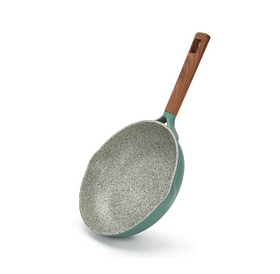
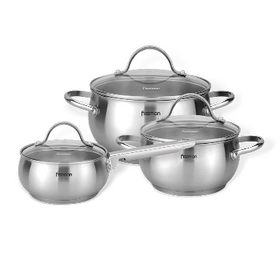
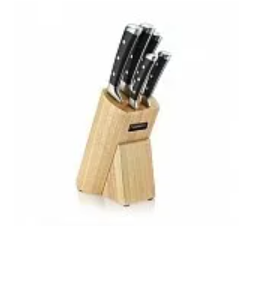
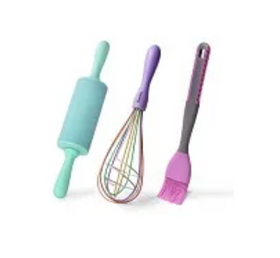

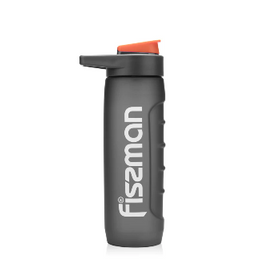
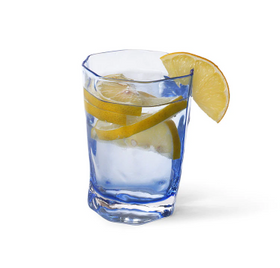




























Leave a comment